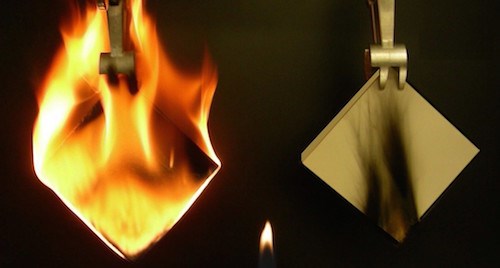Snuffed Out: De Facto Death for Halogenated Flame Retardants
Market forces and self-policing are pushing the market for flame-retardant (FR) additives in a different direction.
Market forces and self-policing are pushing the market for flame-retardant (FR) additives in a different direction.
Jesse Dulek started his presentation with a question; How many in the audience liked to burn things growing up? As a product development engineer focused on FR technologies at custom compounder RTP Company, Winona, Minn., Dulek joked that his current job entailed him getting paid for trying to light things on fire, or more accurately, seeing which compounds can keep from igniting, melting or giving off smoke. In addition to running various materials through his own crucible, Dulek’s job also lets him gauge where technology is headed based on the latest promotions from the additive manufacturers he works with.
“I don't have any suppliers pushing new bromine-free products on me,” Dulek said, “it’s always halogen free. It’s really just a matter of time before halogen free takes over.” Speaking in Denver this May at RTP’s Engineered Plastics Workshop, Dulek and his RTP colleagues walked the attendees through various changes in an array of areas including filled plastics, coloring and, for his portion, flame retardants.
Dulek noted that the 2006 European Union passage of the RoHS (restriction of hazardous substances) directive, despite not directly dictating that FRs be halogen free, has had the effect of pushing halogenated products off the market. “The halogen free world is more complicated,” Dulek said. “We are see an evolution of economics and more and more halogen-free products coming out.”
Generally speaking, halogenated FRs work by inhibiting the chemical reaction in the gas or vapor phase as either an additive or a polymeric product. Non-halogen technologies include phosphorous, hydrated minerals or melamine cyanurate, with benefits and challenges to each.
While halogenated products in general offer lower costs, better processing, greater efficiency and higher physical properties, Dulek said halogen-free alternative have their own perks. Halogen-free products are improving in terms of ease of processing and reduced costs, with more developments on the horizon as new FR standards call for low smoke, low toxicity, less corrosiveness and a lower specific gravity—attributes that further promote halogen free.
Dulek said RoHS mostly impacted pigments, with a lessened effect on FR, specifically eliminating heavy metals like lead, mercury, cadmium, and hexavalent chromium from colorants, as well as polybrominated biphenyls and polybrominated diphenyl ethers from FRs.
“There are still no global bans on use of halogens,” Dulek said, noting that RTP sees more self-policing. “If somebody doesn’t want them in there, we’re not in a position to deny them,” Dulek said. “All we can do is lay out the options. The biggest thing we need are new FR standards. In building or transportation, the standards are built around smoke, heat release, and toxicity, which drives towards halogen free.”
Despite no explicit bans, OEMs like HP, Dell and IBM have foresworn halogenated FRs, while labels like Blue Angel, White Swan, and Ecolabel specifically call out their elimination.
Pyromaniacs everywhere, take note (image courtesy King Plastic Corp.).

Related Content
-
At NPE2024, Follow These Megatrends in Materials and Additives
Offerings range from recycled, biobased, biodegradable and monomaterial structures that enhance recyclability to additives that are more efficient, sustainable and safer to use.
-
Compatibilizers Aid Recycling & Upcycling of Mixed Resins
Compatibilizers are proving their worth in boosting critical properties such as impact/stiffness balance of PCR and PIR blends of polyolefins and other plastics.
-
Graphene Masterbatches for Flexible and Rigid Polyolefin Packaging and Beyond
Brazilian start-up Gerdau Graphene joins a growing group of graphene additives suppliers with a focus on boosting properties of large volume commodity thermoplastics.




















